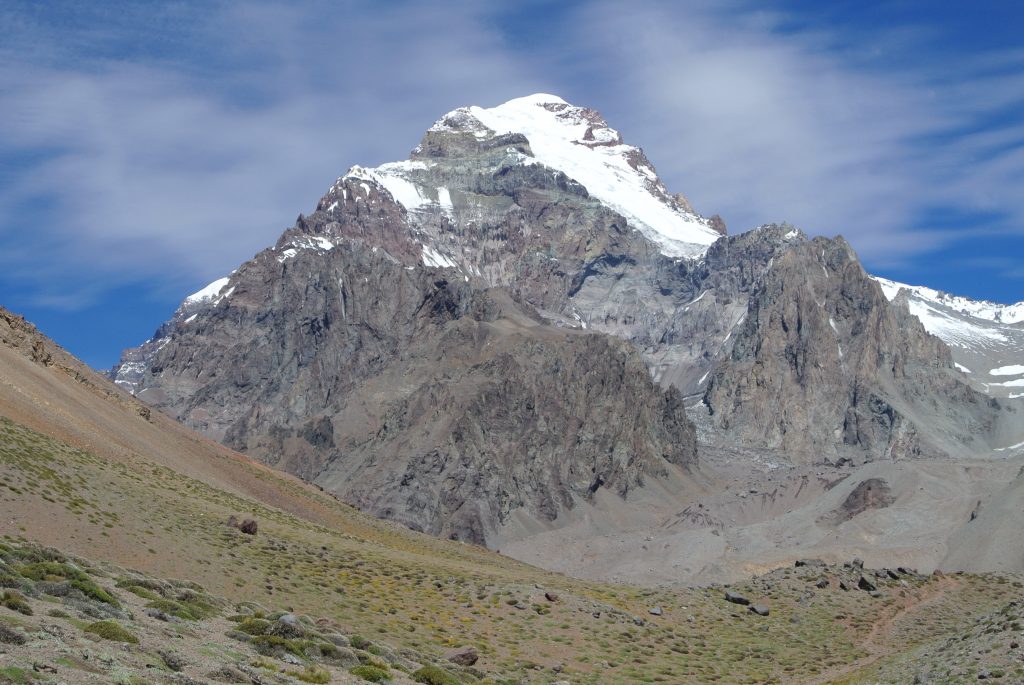Flights and Logistics
We will meet in the beautiful town of Mendoza, Argentina for this expedition. Mendoza is in the heart of Argentine wine country, and it is well worth planning on spending an extra couple of days for touring wineries, whitewater rafting, or enjoying the bustling sidewalk cafés and parks.
We will be staying in the Amerian Executive Hotel which is in convenient walking distance to downtown Mendoza and the popular “Sarmiento” district. The hotel is very comfortable and while you will find prices in Mendoza are reasonable compared to the US and Europe; unfortunately, the days of Argentine bargains are in the past. Expect warm to hot comfortable spring temperatures in Mendoza. Flip-flops are recommended!
Most flights to Mendoza will pass through the airport in Santiago, Chile. If you have a long layover and would like to visit this beautiful, colonial city, you will need to pay for a Chilean Entry Visa. If you remain “in transit” (En Transito) you do not need a visa. When requesting a seat assignment, consider asking for an “A” seat, as this window should afford a nice view of Aconcagua as you fly in (or Seat F or equivalent for outbound flights).
You’ll want to check your baggage all the way to Mendoza (your final destination). Even if you have multiple airline tickets, make sure your gear is checked to your final destination (unless you are planning to spend a night somewhere in transit before arriving to Mendoza).
GUIDES’ TIP: Consider flying with your mountain boots as part of your carry-on baggage. If your luggage does become lost or delayed along the way, we can probably find enough gear to outfit you for the expedition, but boots are the most challenging (and potentially expensive and ill-fitting) element of your kit to find in Mendoza.
It is important to have a current passport that will not expire within six months of your arrival. If you are close to the expiration date on your passport we recommend updating that as soon as possible. There are currently no mandatory vaccinations for Chile or Argentina, but it is never a bad idea to visit your doctor and update any vaccinations they may recommend.
Currently, Canadian citizens are required to pay a reciprocity fee to enter Argentina. Please be aware that you CAN NOT pay this fee at the airport! You must complete an on-line process. Please let us know if you have any questions or if we can assist you with this process.
If you are delayed or have any problems with your travel to Argentina please let us know immediately at [email protected] or call the office +1-970-369-1153. We can pass this info on to the guides in country so they can make any necessary accommodations to our schedule.
When you arrive in Mendoza, Argentina a Mountain Trip representative will be waiting for you at the airport. Your guide will be wearing a Mountain Trip shirt and will be actively looking for climbers with large duffel bags.
If for any reason you do not connect with our representative due to flight delays, etc. please take a taxi or airport shuttle to your hotel which is the Amerian Executive Hotel, located on Calle San Lorenzo 660. The phone for the hotel is +54 – 261 – 5245000. They will be expecting you (we have made reservations for you under “Mountain Trip — your last name”). If you need to take the shuttle they will accept US Dollars. It should cost about $10 USD and only takes about 10-15 minutes. If for any reason our guide does not meet you at the airport, they will meet you at the hotel. Please leave a message for Mountain Trip at the front desk that you have arrived.



